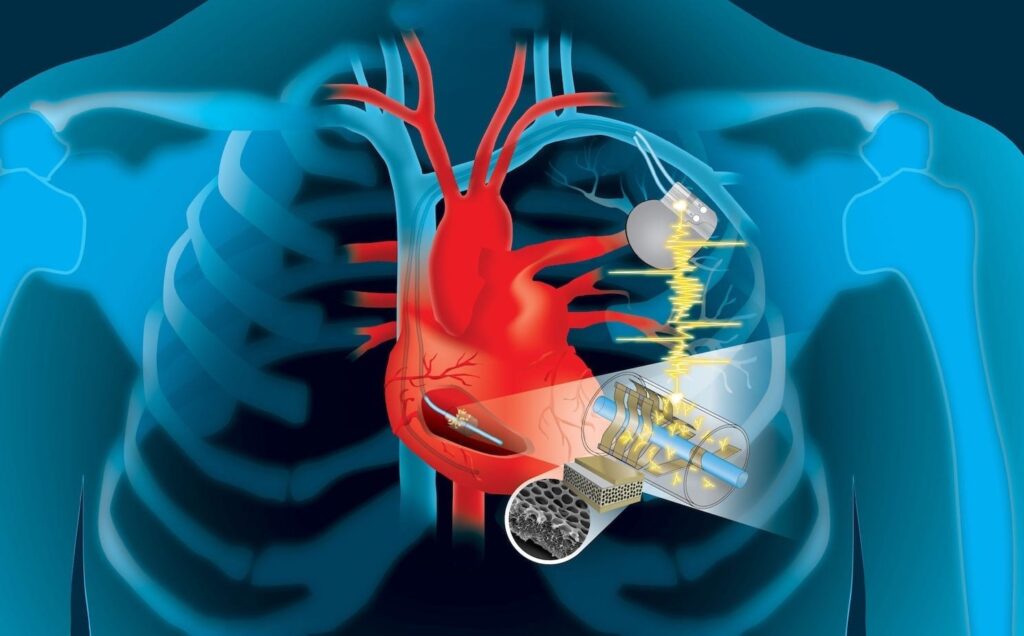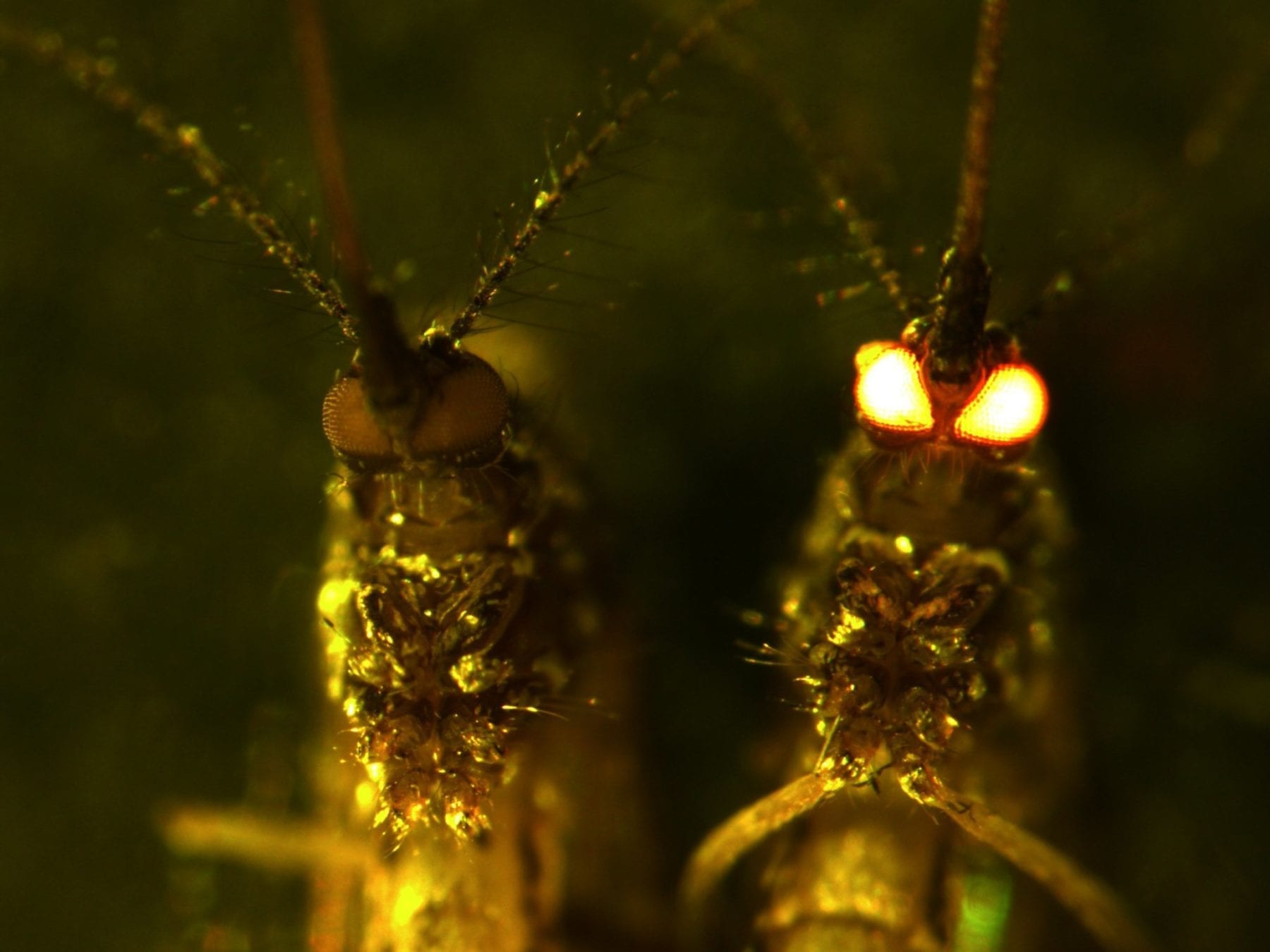
The heart’s motion is so powerful that it can recharge devices that save our lives, according to new research from Dartmouth College.
Using a dime-sized invention developed by engineers at the Thayer School of Engineering at Dartmouth, the kinetic energy of the heart can be converted into electricity to power a wide-range of implantable devices, according to the study funded by the National Institutes of Health.
Millions of people rely on pacemakers, defibrillators and other live-saving implantable devices powered by batteries that need to be replaced every five to 10 years. Those replacements require surgery which can be costly and create the possibility of complications and infections.
“We’re trying to solve the ultimate problem for any implantable biomedical device,” says Dartmouth engineering professor John X.J. Zhang, a lead researcher on the study his team completed alongside clinicians at UT Health San Antonio. “How do you create an effective energy source so the device will do its job during the entire life span of the patient, without the need for surgery to replace the battery?”
“Of equal importance is that the device not interfere with the body’s function,” adds Dartmouth research associate Lin Dong, first author on the paper. “We knew it had to be biocompatible, lightweight, flexible, and low profile, so it not only fits into the current pacemaker structure but is also scalable for future multi-functionality.”
The team’s work proposes modifying pacemakers to harness the kinetic energy of the lead wire that’s attached to the heart, converting it into electricity to continually charge the batteries. The added material is a type of thin polymer piezoelectric film called “PVDF” and, when designed with porous structures — either an array of small buckle beams or a flexible cantilever — it can convert even small mechanical motion to electricity. An added benefit: the same modules could potentially be used as sensors to enable data collection for real-time monitoring of patients.
The results of the three-year study, completed by Dartmouth’s engineering researchers along with clinicians at UT Health San Antonio, were just published in the cover story for Advanced Materials Technologies.
The two remaining years of NIH funding plus time to finish the pre-clinical process and obtain regulatory approval puts a self-charging pacemaker approximately five years out from commercialization, according to Zhang.
“We’ve completed the first round of animal studies with great results which will be published soon,” says Zhang. “There is already a lot of expressed interest from the major medical technology companies, and Andrew Closson, one of the study’s authors working with Lin Dong and an engineering PhD Innovation Program student at Dartmouth, is learning the business and technology transfer skills to be a cohort in moving forward with the entrepreneurial phase of this effort.”
Other key collaborators on the study include Dartmouth engineering professor Zi Chen, an expert on thin structure mechanics, and Dr. Marc Feldman, professor and clinical cardiologist at UT Health San Antonio.
Learn more: Engineers Harvest Heart’s Energy to Power Life-Saving Devices
The Latest on: Cardiac energy harvesting device
[google_news title=”” keyword=”cardiac energy harvesting device” num_posts=”10″ blurb_length=”0″ show_thumb=”left”]
via Google News
The Latest on: Cardiac energy harvesting device
- HKU Mechanical Engineering researchers develop miniaturised electric generators based on hydrogels for use in biomedical deviceson April 25, 2024 at 2:00 pm
The development of engineered devices capable of harvesting the body’s mechanical motion and converting it into electricity is crucial for the functioning of bioelectronics.Mechanoelectrical energy co ...
- STMicroelectronics Unveils Advanced Ultra-Low-Power STM32 MCUson April 23, 2024 at 9:30 pm
STMicroelectronics, a global semiconductor leader serving customers across the spectrum of electronics applications, has introduced a new generation of ...
- Northrop Grumman's Manta Ray Could Change Undersea Warfare Foreveron April 23, 2024 at 10:20 am
A new class of UUV, it is an extra-large glider that will operate long-duration, long-range and payload-capable undersea missions without need for on-site human logistics.” ...
- The heart-powered device that could recharge pacemakerson April 19, 2024 at 2:45 am
In a joint effort between UW Medicine and the department of mechanical engineering, researchers have created a prototype that uses the heart's mechanical energy to recharge the batteries of leadless ...
- Harvesting vibrational energy from 'colored noise'on April 18, 2024 at 8:35 am
The energy demands of today's ubiquitous small electronic devices—including sensors, data transmitters, medical implants and 'wearable' consumer products such as Fitbits—can no longer be met by ...
- Vein Harvesting for the Hearton April 3, 2024 at 4:20 pm
Matthew Thompson, a cardiac physician assistant at Saint ... The process, referred to as vein harvesting, has saved many lives but has an aesthetic down side: Doctors use a tiny fiber-optic ...
- A simple way to harvest more ‘blue energy’ from waveson April 2, 2024 at 4:59 pm
Researchers harvest more energy from waves by moving a liquid–solid nanogenerator’s electrode to the end of the tube where the water crashes. As any surfer will tell you, waves pack a powerful ...
- A simple way to harvest more 'blue energy' from waveson April 2, 2024 at 4:59 pm
As any surfer will tell you, waves pack a powerful punch. Now, we are one step closer to capturing the energy behind the ocean's constant ebb and flow with an improved 'blue energy' harvesting device.
- Textiles and Clothing Newson October 25, 2023 at 5:00 pm
17, 2024 — A new fabric-based touch sensor used machine learning to control mobile apps, video games and other devices while ... sensors, energy harvesting, and storage -- that can be produced ...
- energy harvestingon August 8, 2023 at 5:00 pm
Back in 1956, Seiko created their “magic lever” as an integral part of self-winding mechanical watches, which were essentially mechanical energy harvesters. The magic lever is a type of ...
via Bing News











